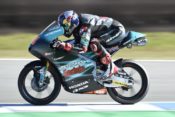Superbike Style
Those who long for the days of a sideways Eddie Lawson and Laguna Seca can now live them with the new Kawasaki Z900RS Café.
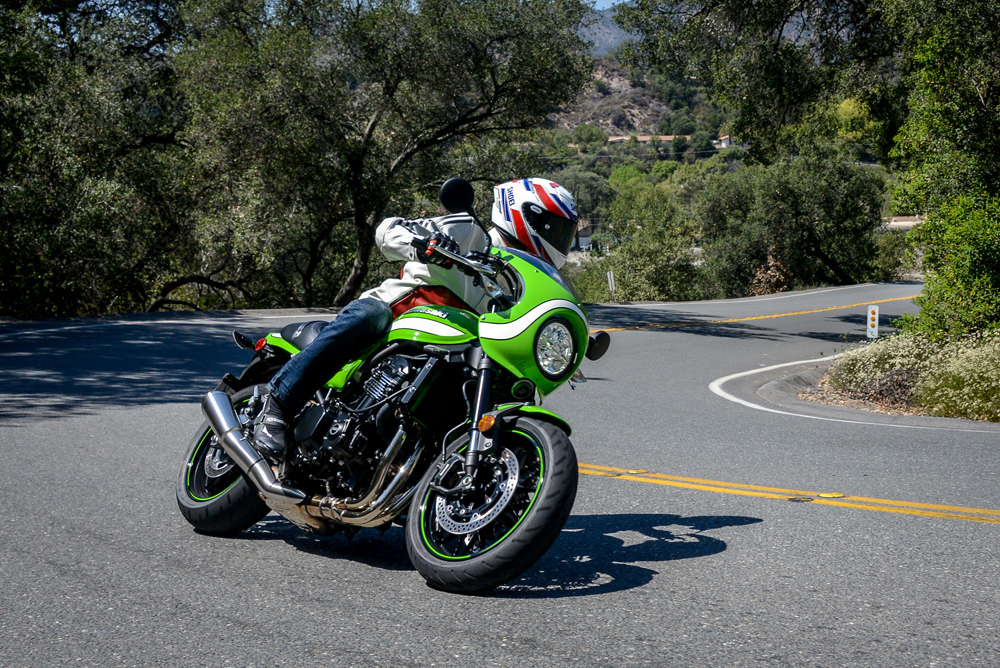
A couple of weeks ago, we got a comment from reader Steve Ferraz. “Sometimes, people get things right,” he said. Steve was referring to the unveiling of the bronze Nicky Hayden statue in Owensboro, Kentucky, but I think it was an apt line for describing the 2018 Kawasaki Z900RS Café.
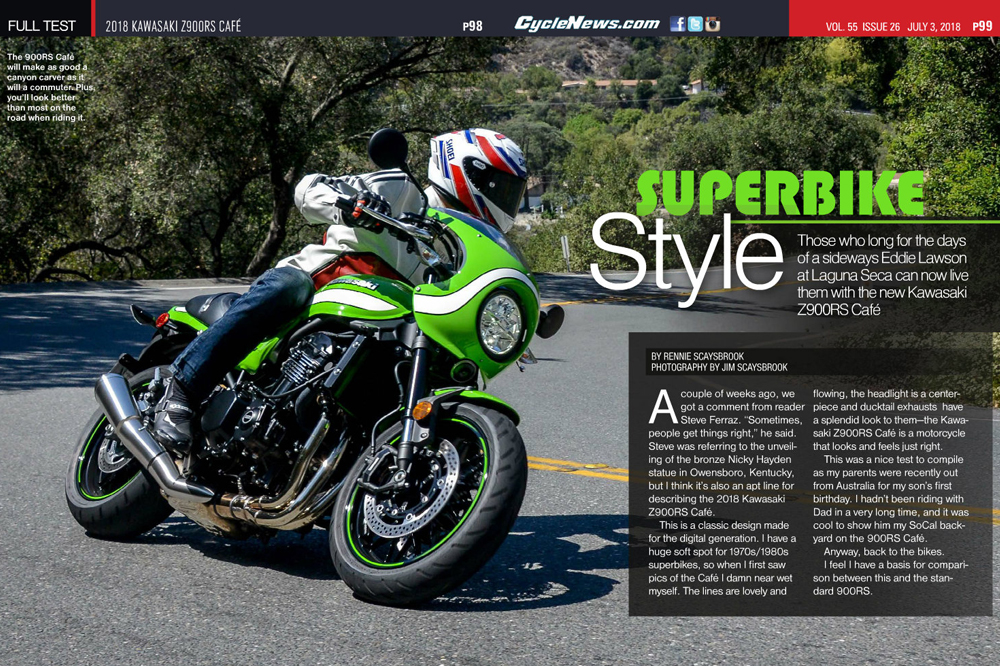
Click here to read this in the Cycle News Digital Edition Magazine.
Photography by Jim Scaysbrook
This is a classic design made for the digital generation. I have a huge soft spot for 1970s/1980s superbikes, so when I first saw pics of the Café I damn near wet myself. The lines are lovely and flowing, the headlight is a centerpiece and ducktail exhaust have a splendid look to them—the Kawasaki Z900RS Café is a motorcycle that looks and feels just right.
This was a nice test to compile as my parents were recently out from Australia for my son’s first birthday. I hadn’t been riding with dad in a very long time, and it was cool to show him my SoCal backyard on the 900RS Café.
Anyway, back to the bikes.
I feel I have a basis for comparison between this and the standard 900RS. I have been riding a Z900RS for the last few months and the Café edition feels completely different in terms of engine character and road holding capabilities.
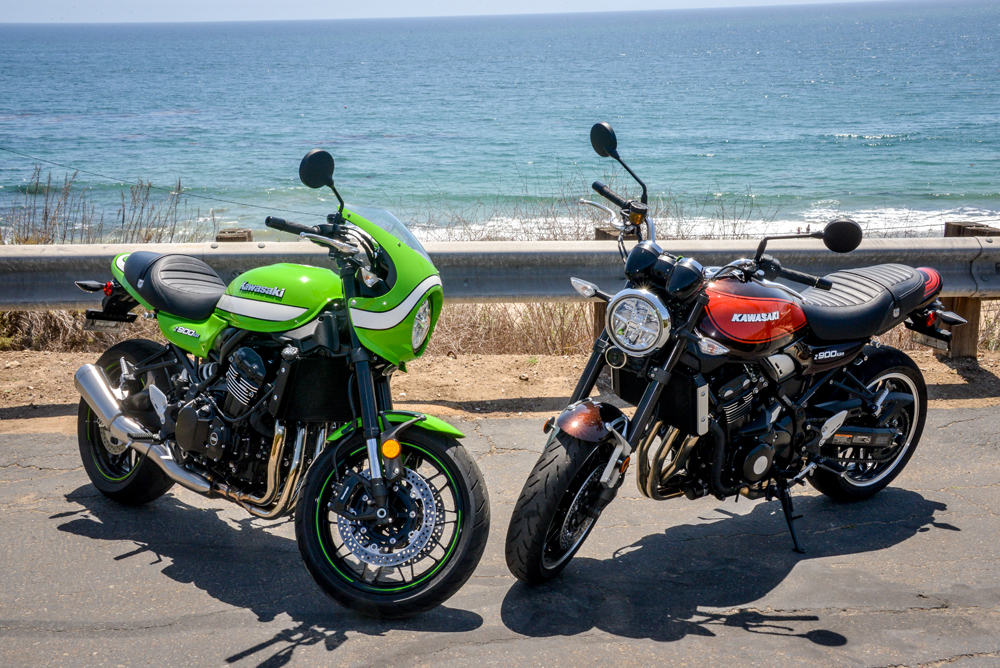
One of my biggest gripes with the base model 900RS was its awful throttle response, which is a product of engine mapping and the fact Kawasaki needs to stuff what feels like 50 pounds of concrete in that catalytic convertor underneath the bike to get through California’s emissions laws.
Kawasaki still needs to do that to the exhaust with the Café, but to their credit they must have worked hard on correcting the mapping issue within the Café’s ECU.
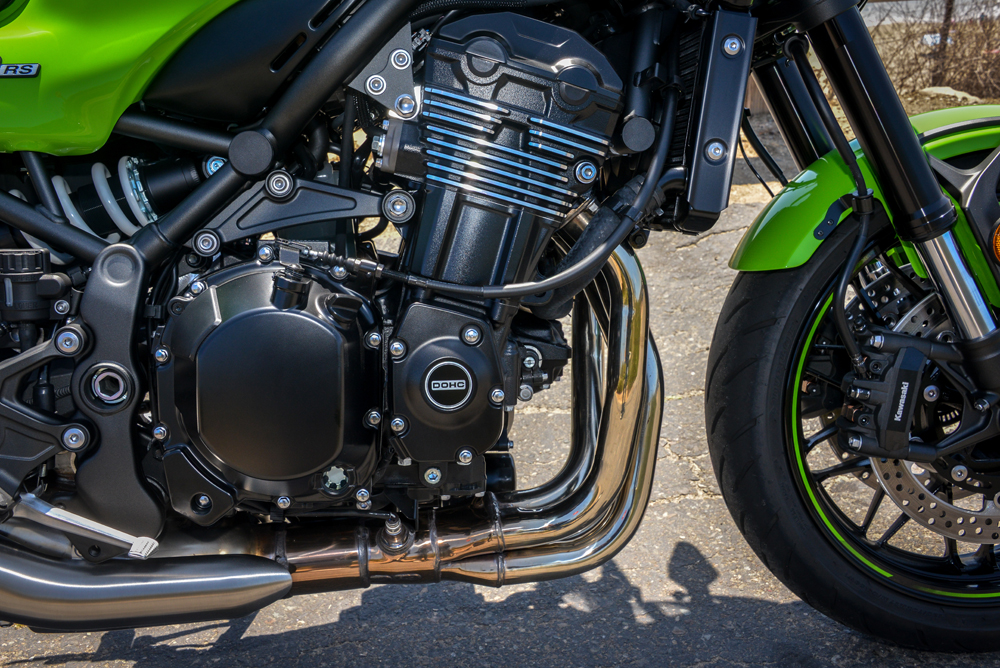
Wait, must have, I hear you ask? The reason I say this is because Kawasaki will not reveal whether they have changed the mapping or not on the Café. We asked for confirmation from KHI (Kawasaki Heavy Industries), yet no formal response was forthcoming. Odd, especially when you ride the Café and base 900RS back-to-back and you realize how much nicer the Café is with regards to throttle response.
The Café’s throttle response is no longer the on-off affair found with the Z900RS—from what dad tells me, who tested the exact same bike in Australia for his magazine, the American 900RS’s have a particularly crappy throttle response compared to the 900s on his side of the pond.
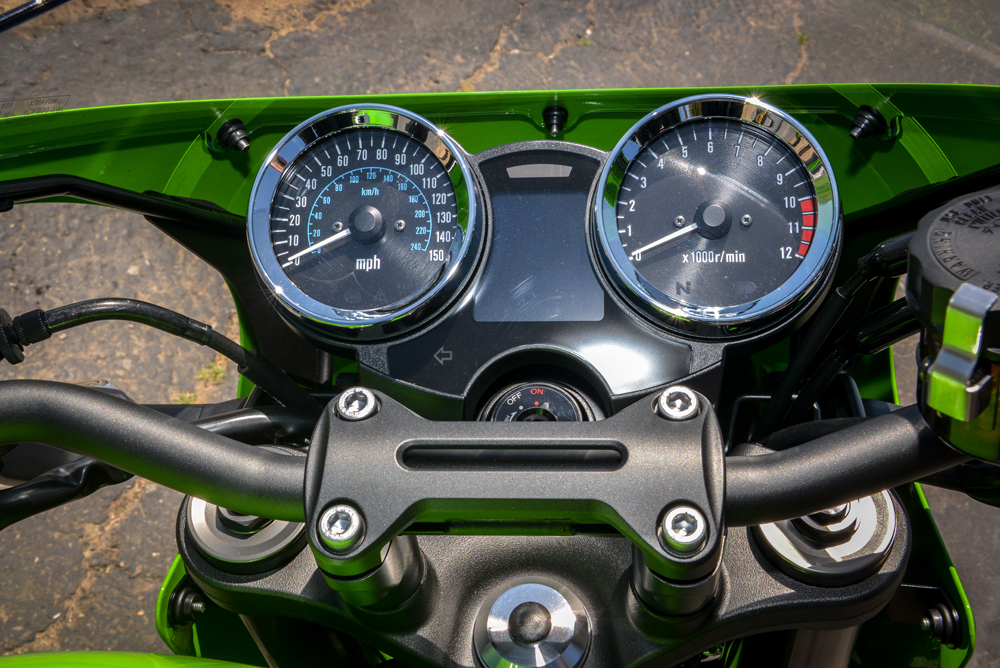
The gain from this is twofold: first is the smoother throttle response makes for a less jerky ride. The second benefit is the Café is far more confidence inspiring to ride at anything like a decent pace because when you open the throttle a little on the side of the tire at speed, you are met with a more progressive hit of power that’s easier to modulate than on the 900RS. Like well set up carbs.
This is a very good thing because the 948cc inline four that first saw life inside the 2017 Kawasaki Z900, itself a gem of Japanese aggression, is an excellent motor. The changes wrought by Kawasaki when developing the 900RS and Café version, like different cams, intake, compression, a heavier flywheel, final drive ratio and that exhaust, totally transform the feel at the twist grip. Imagine Jack Nicholson in Easy Rider and The Shining—same guy, two totally different personas.
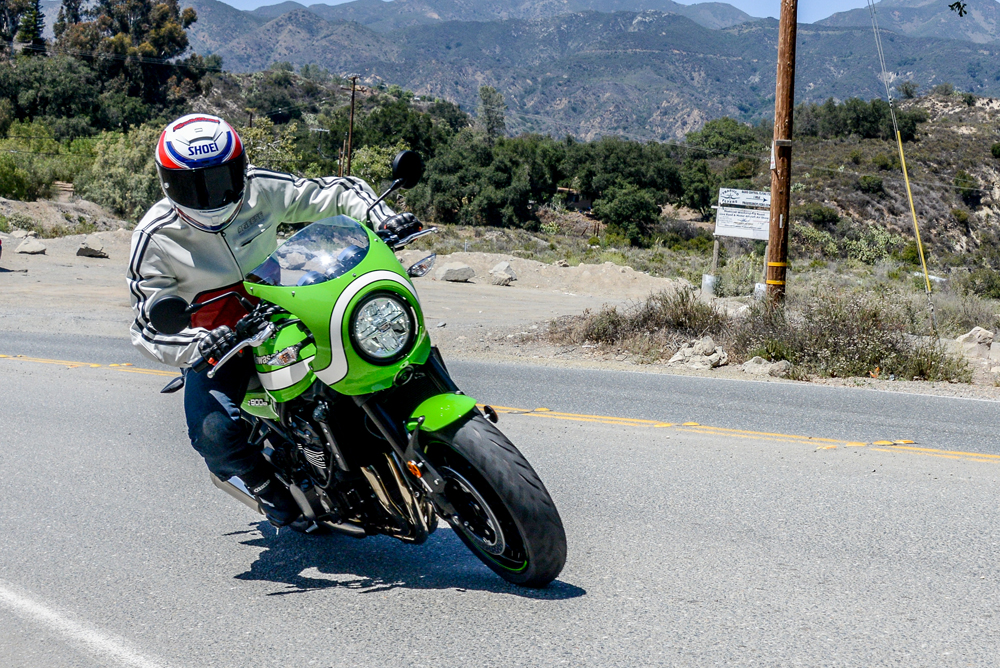
On the Café, there’s a butt load of bottom-to-mid range torque on hand, so much so I feel the gearing is too short to really maximize the motor. I have the same problem on the 900RS, not surprising considering they share the same final gearing of 15/42 front to rear.
My feeling is Kawasaki doesn’t want you to really max the Café out. It’s a retro bike, after all, designed to look cool while giving off the persona that you used to be the man, back in the day. The gearing is such that you hardly ever need first gear, even from a dead stop at the lights. You can easily leave it in second because you’ll rip into sixth gear far quicker than you’d expect for a four-cylinder just shy of 1000cc.
The gearbox action is quite nice. It’s not fitted with a quickshifter, doesn’t need one. It’s a sure-footed change, a little old school in that it’s heavier than what you’ll find on a modern superbike, but certainly nothing to complain about. The cable clutch is similarly smooth and delightfully old school.
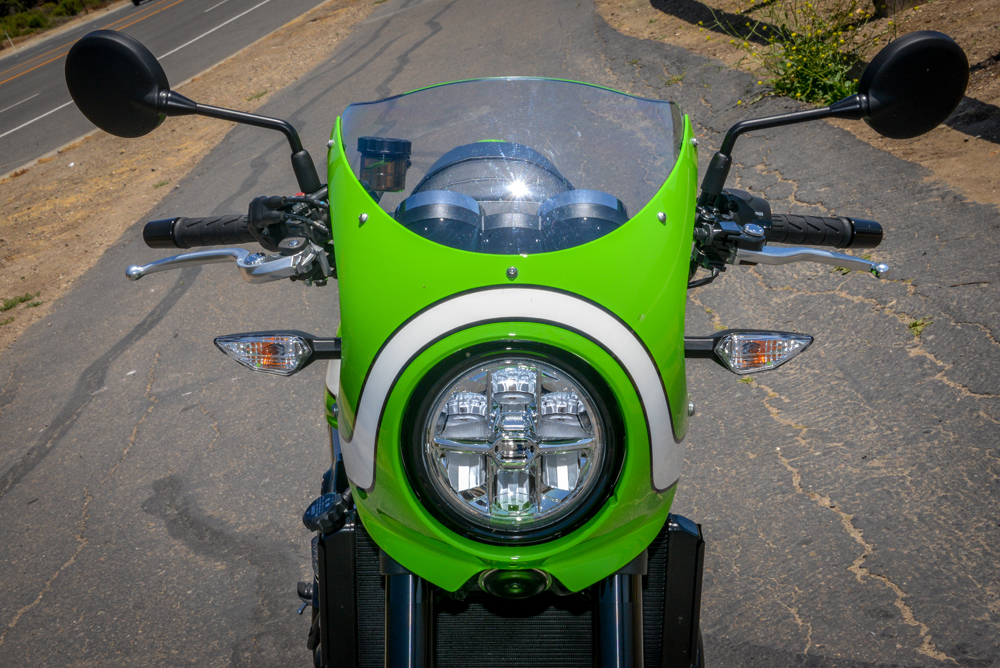
One of the great things about the Café is the stuff that’s different from the 900RS makes it a better bike. Sounds odd to say, I know. The bodywork is a case in point.
The addition of the front cowling and screen helps deflect the wind right at the correct point for a rider of my height (a touch under 6’1”), allowing the wind to hit me right in the chest rather than my head, as is the case with so many screens these days. My dad found the opposite, as he’s about two inches shorter than I am. He found the wind was directed right at his visor, so preferred the stance offered by the full naked 900RS more to the Café.
The improved wind deflection (for me) was thanks in part to the excellent one-piece bar that’s almost a cross between a clip-on and motocross-style flat bar. It can feel a little odd at first, but the Café puts the rider in the near perfect riding position, angling them slightly forward from center but not enough that you end up forcing more weight on your wrists than necessary.
Couple that with the deep-dish seat, which holds the rider in place much more than the flatter one found on the 900RS, and the Café becomes an irresistible steed you just want to ride more and more.
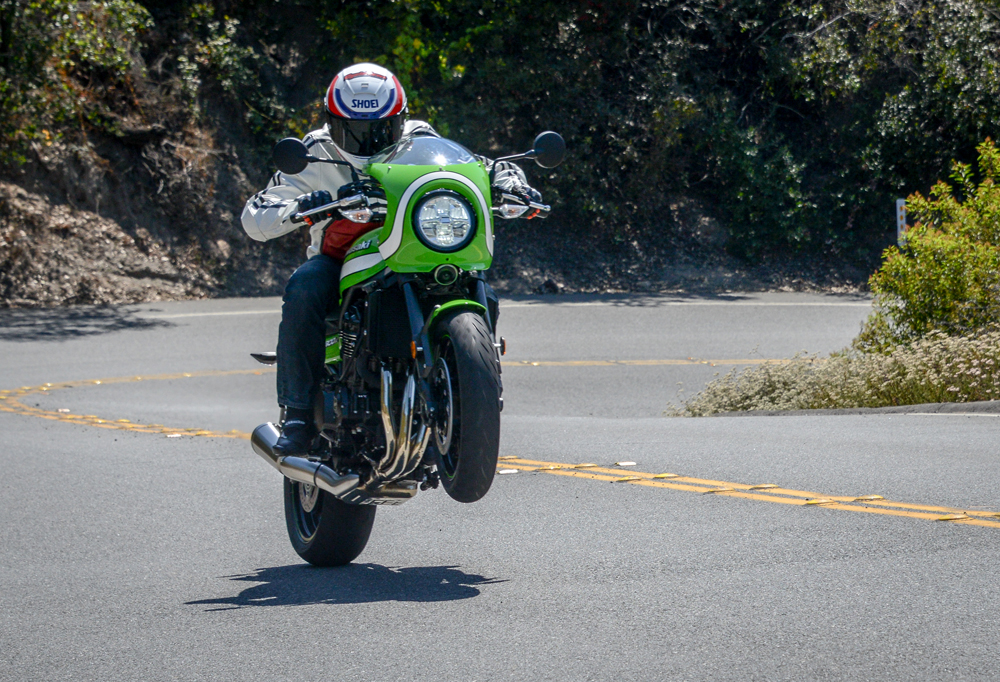
The Café comes with the Kawasaki TRaction Control (KTRC) system and ABS brakes, which I didn’t give a second thought to once I’d set off in level one of two. Unless you’re blitzing it you’ll not notice the systems working in the background. You can turn the TC off if you want, but not the ABS.
Whereas I thought the 900RS was a bit of a missed opportunity, I feel Kawasaki has absolutely nailed it with the Café version. The changes made—both mechanically and aesthetically—make for an improved package that oozes charisma and charm, while remaining decidedly modern in the process. CN
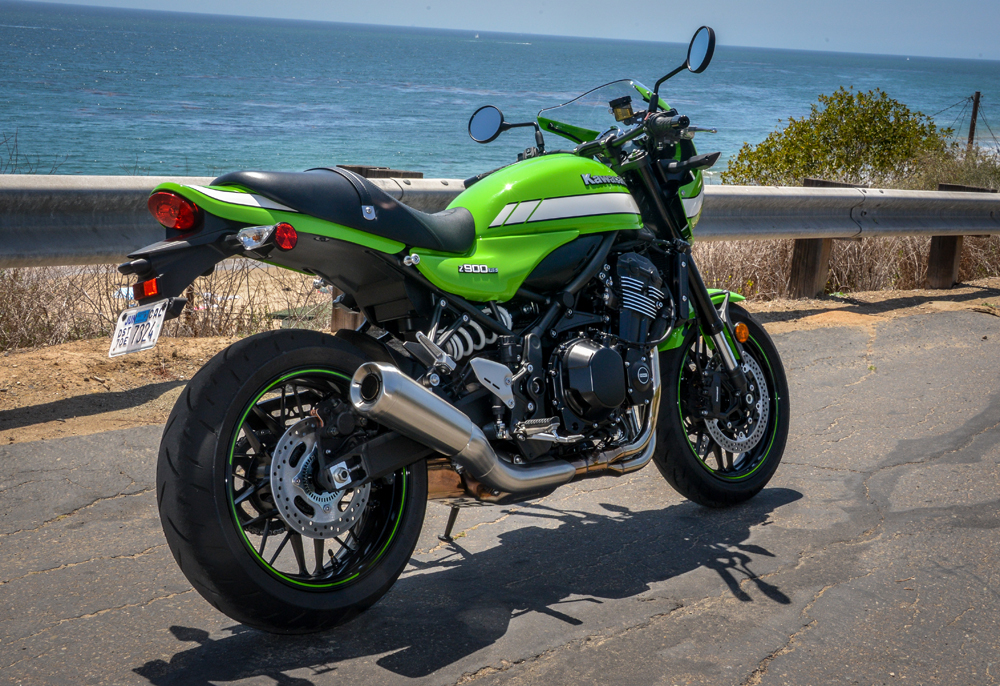
Specifications |
2018 Kawasaki Z900RS Café ($11,499) |
| Engine: | Liquid-cooled, DOHC, 16-valve, inline 4 cylinder |
| Displacement: | 948cc |
| Bore x stroke: | 73.4 x 56mm |
| Compression ratio: | 10.8:1 |
| Clutch: | Wet multi-plate |
| Transmission: | 6-speed |
| Chassis: | Tubular steel trellis frame |
| Front suspension: | Inverted fork with adjustable compression and rebound damping, and spring preload |
| Rear suspension: | Horizontal back-link swingarm with stepless adjustable rebound damping and spring preload adjustment |
| Front wheel travel: | 4.7 in. |
| Rear wheel travel: | 5.5 in. |
| Front brake: | 300mm dual semi-floating discs, radially-mounted dual monobloc four-piston calipers, ABS as standard |
| Rear brake: | 250 mm disc, single-piston caliper with ABS as standard |
| Front tire: | 120/70 ZR17 Dunlop GPR-300F |
| Rear tire: | 180/55 ZR17 Dunlop GPR-300 |
| Rake: | 25.4° |
| Wheelbase: | 58.1 in. |
| Seat height: | 31.5 in. |
| Fuel capacity: | 4.5 gal |
| Weight (curb, claimed): | 471.9 lbs. |
| Color: | Vintage Lime Green |
Click here to read this in the Cycle News Digital Edition Magazine.
Click here for the latest Cycle News Standard motorcycle reviews and news.
Click here for more Kawasaki motorcycle reviews and news.
